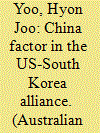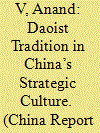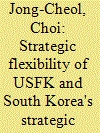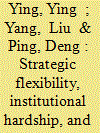| Srl | Item |
| 1 |
ID:
088065


|
|
|
|
|
| Publication |
2009.
|
| Summary/Abstract |
Many scholarly analyses of small economies over the past two decades have been premised on the implicit understanding that a state's small population size, compounded by such factors as islandness and remoteness from markets, is to blame for an inherent and unavoidable economic vulnerability. The article critiques the core features of this approach, and proposes in turn to discuss and profile the development trajectories of small economies from the vantage point of the strategic flexibility used by small states (at multiple levels as individuals, household units, corporate entities and complete jurisdictions) in seeking to exploit opportunities and maximize economic gains in a turbulent and dynamic external environment with which they must engage. Keeping alive a portfolio of skills and revenue streams enables these actors to migrate inter-sectorally as well as trans-nationally.
|
|
|
|
|
|
|
|
|
|
|
|
|
|
|
|
| 2 |
ID:
127354


|
|
|
|
|
| Publication |
2014.
|
| Summary/Abstract |
Over the past 10 years, South Korea has chosen inconsistent strategies with respect to the US-South Korea alliance. On the one hand, Seoul disagreed with Washington about the extended role of United States Forces Korea and the deployment of US missile defence systems in East Asia. On the other hand, these problems ironically coincided with South Korea's strong support for the USA in operations in Afghanistan and Iraq. What explains the inconsistency of South Korea's alliance policies? Major schools of thought in international relations have offered explanations, but their analyses are deficient and indeterminate. This article looks at the South Korea-China-North Korea triangle as a new approach to explaining the puzzling behaviour of South Korea. The model shows that South Korea's alliance policies are driven by two causal variables. First, North Korea is an impelling force for South Korea to remain as a strong US alliance partner. This encourages Seoul to maintain cooperation with Washington in wide-ranging alliance tasks. Second, South Korea's policies are likely to reflect the way the nation perceives how useful China is in taming North Korea. The perceived usefulness of China causes Seoul to accommodate China and decrease cooperation with the USA. This might strain the relationship with the USA should South Korea evade alliance missions that might run contrary to China's security interests.
|
|
|
|
|
|
|
|
|
|
|
|
|
|
|
|
| 3 |
ID:
175319


|
|
|
|
|
| Summary/Abstract |
China’s strategic culture has mostly been understood from the competing prisms of Confucianism and realpolitik traditions. However, there is a need to go beyond this binary approach to explore the more nuanced civilisational basis of China’s strategic thinking. It is in this context that the role of Daoism becomes significant in understanding China’s behavioural patterns. The Daoist strategic tradition has been found to be a highly cogent system based on five key pillars—strategic rationalism, strategic aloofness, strategic optimisation, strategic restraint and strategic flexibility. These aspects have been found reflected in various key instances of China’s strategic practice, demonstrating its relevance for understanding China’s strategic culture.
|
|
|
|
|
|
|
|
|
|
|
|
|
|
|
|
| 4 |
ID:
071684


|
|
|
| 5 |
ID:
151094


|
|
|
|
|
| Summary/Abstract |
What drives the international expansion strategy of Chinese new ventures? By integrating the institution-based view and resource-based view of firm strategy, the authors propose that perceived institutional hardship has negative effects on internationalisation strategies of Chinese new ventures, while a firm’s dynamic capabilities (e.g. strategic flexibility) rather than static ordinary resources (e.g. organisational slack and technological capability) have positive effects. Based on an empirical analysis of 151 new ventures in Zhejiang province in China, the theoretical arguments posited by the authors are strongly supported.
|
|
|
|
|
|
|
|
|
|
|
|
|
|
|
|